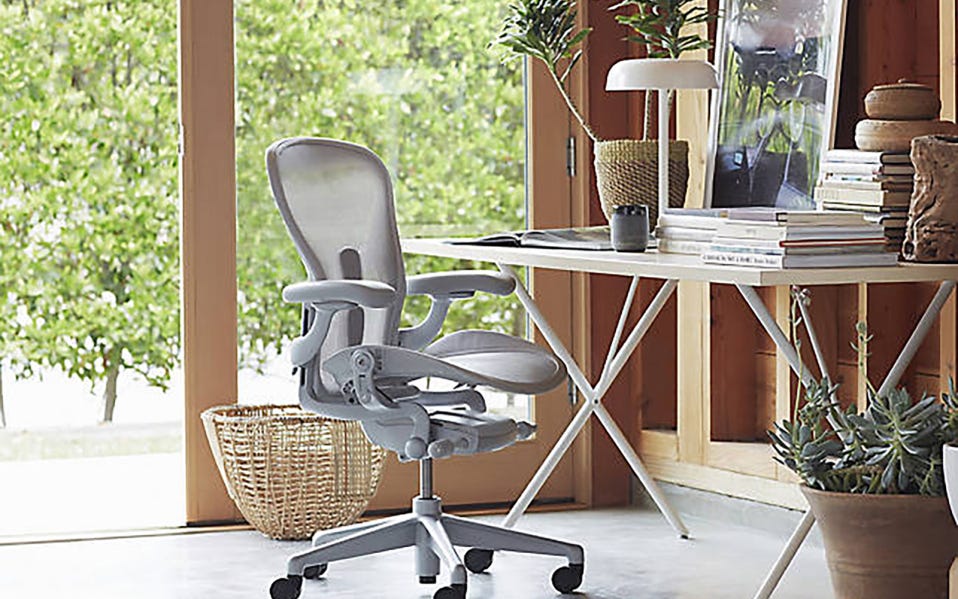How is it that after thousands of years of humans opting to build things for their butts to rest on rather than using the ground, comfortable yet functional seating is still uncommon, rare even.
It’s shocking and amusing how varied the shortcomings are, too. In the wide world, with everything from stools to benches and office chairs to armless swivel chairs and you might find...
“Arm day only” Elegant, suave, leather-bound high tops without accessible footrests, leaving your feet dangling just out of reach of the ground, subjecting your butt to the entire weight of your body
“Two-face” design-forward lounge chairs with a generous surface area to enjoy which looks oh so inviting, yet upon a nice plopping onto, a lively recoil slams you back rather than the expected cozy squish.
“Mismatched pair” short squat armchairs matched with tall table tops, where you’re forced to sit on the edge of the chair and your brain tries to convince you you’re set up ergonomically
From The Tyranny of Chairs:
Chairs are generally not a response to the realities of the body, its natural evolution, or its needs over any extended period. Instead, the industrialised body has devolved in its needs and succumbed to chairs. “We design them,” Cranz writes, repurposing a famous line of Winston Churchill’s, “but once built, they shape us.”
It seems the problem is that we’ve established a mental model of how chairs “should” be and the way they “should” be or look is in conflict with how they actually need to in order to be comfortable and ergonomic and functional. The article continues:
It’s not just chairs, of course – so many of the products brought to market by the profession of industrial design were not created for many bodies. Instead, they were designed to be plentiful, novel rather than necessary, and cheap. One famous designer, Victor Papanek, memorably dubbed these bad designs a form of “do-it-yourself murder”.
A do-it-yourself murder is an apt description for a lot of human industry in general. Every day our endeavors push us closer to the brink, we produce an overabundance of under desired goods designed to be replaced. We obsess over production—over the new and the sleek and the futuristic. V2 is always fancier and shinier than v1 and regardless of the material differences (even when the product becomes worse!), we still have a subconscious desire to upgrade. Products aren’t designed for people to play with and adjust to their own needs—they’re optimized to sell and leave the user wanting more. After all, the most successful business is the addictive substances business, where every use leaves you craving ever more. We seek to replicate this strategy in a more subtle way in our consumer culture. Our products aim to please and dazzle with smooth demos but always leave out a core piece that can be satisfied by a future release. This trend has gone down over the years since the passion following the inception of mass industrialization as designers have advocated for more universal design, but rarely do you find it in accessible forms. The gold standard for “seating done right” is the Herman Miller Aeron which sits at a steep $995 price tag for the most basic model. Perhaps the real issue isn’t the price point rather than the fact that we’ve been anchored to unsustainably low price pointers while wages have stagnated for a majority of jobs. I don’t know all the details of the historical phenomenon to me, but it’s strange that well-designed, built-to-last versions of common tools are still inaccessible to so many.
...[This is what] Papanek called “the dark twins of styling and obsolescence”. Manufacturing for styling, amplified by advertising, resulted in an empty desire for unnecessary objects that became quickly unusable. And objects that were created purely for ephemeral desire, in turn, created a whole ethos of obsolescence – an accepted disposability that made for a dangerous neglect of safety standards, resulting in needless injury from common household objects
What would it be like if there were simple analog levers in every chair to adjust to your liking? What if we rejected designing en mass for an average joe in favor of designing intentionally for the average joe to make what works for them? What if all of our products were made to last and designed to be adaptable to changing conditions?
Can we create a society that can support access to these kinds of tools for every member, where tinkering is not only accepted but encouraged? We can start with the culture around ephemeral desire and slowly shift it to favor lasting stability, and at the same time, we must champion policies that enable greater access to a sustainable style of living over a disposable one.
This is the 5th installment in my experiment of publishing raw, lightly edited mini-essays every day towards achieving 100 public pieces. Check out the rationale and the full list here. If you enjoy this and would like to follow along, subscribe below!





I loved this line. It's so true 😅
> Products aren’t designed for people to play with and adjust to their own needs—they’re optimized to sell and leave the user wanting more.
My friend who took a bunch of product/industrial design and architecture classes in college actually designed and built several chairs for multiple classes, so I think the chair example is very appropriate for this topic. I bought her this book of 1000 chairs (https://www.goodreads.com/book/show/1083029.1000_Chairs) as a joke, but I never thought to ask what sort of things they thought about when designing their chairs.